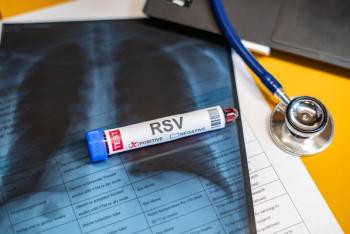
Review Highlights Sociodemographic Disparities in Cancer Risk Factors and Prevention Measures
A literature review sheds light on cancer risk factors and suboptimal screening levels that persist in the United States among certain racial, ethnic, and socioeconomic groups, despite a steady decline in cancer deaths and smoking prevalence.
Despite historic lows in smoking prevalence, the levels of other
The review, published in
“Curtailing future cancer burden will require collaborative community and governmental action at the national, state, and local levels to develop and implement efforts to increase access to affordable, nutritious foods; provide safe, enjoyable, and accessible opportunities for physical activity; and regulate alcohol access. These efforts must be culturally appropriate and equitable as groups that have been historically marginalized have fewer opportunities to modify behaviors to improve health,” wrote the investigators.
Since the 1990s, cancer deaths have steadily declined in the United States. However, 608,570 cancer-related deaths are expected in 2021, approximately 45% of which will likely be associated with avoidable risk factors, such as smoking, obesity, alcohol intake, lack of physical activity, and unhealthy diet.
Cancer prevention and early detection efforts, including increased screening measures and HPV and hepatitis B virus vaccines, are considered essential for reducing cancer burden. Additionally, smoking cessation could significantly reduce the risk of developing and dying from at least 12 cancers.
The investigators set out to estimate the prevalence of cancer risk factors and screening tests among US adults in 2018 and 2019 by collecting data from 5 public population-based surveys and databases. Some of the surveys were conducted in person and others were telephone-based.
In 2019, 14.2% of the population smoked cigarettes, a historic low partly attributable to roughly 61.7% (n = 54.9 million) of all persons who have ever smoked quitting over time. However, the quit ratio was less than 45% among people who have a low income, are uninsured, or are insured through Medicaid.
Additionally, the quit ratio was less than 55% among the Black, Indigenous, immigrant, those without a college degree, LGBTQ communities, and 12 of 17 Southern states.
In 2018, the prevalence of cancer screenings was less than ideal:
- Screenings for colorectal cancer in individuals aged 50 or younger was 65.5%
- For breast cancer, 63.2% of women aged 45 and older reported being up-to-date with mammography screening
- Among women aged 21 to 65 years, 83.7% reported being up-to-date with screenings for cervical cancer, which incorporated testing for HPV
When looking at uninsured adults, screening prevalence for colorectal (29.6%) and breast cancer (31.1%) were even lower.
Although recommendations for cancer screenings exist, discussions between patients and their physicians about the potential benefits, harms, and limitations of screenings may be lacking.
In addition, obesity levels continued to be high, reaching 42.4% of the overall population from 2017 to 2018. Obesity among Black (56.9%) and Hispanic women (43.7%) was disproportionately higher than White women (39.8%). Differences in obesity levels were also seen among men but to a lesser extent (Hispanic, 45.7% vs White, 44.7% and Black, 41.1%). Obesity levels were the lowest among Asian men (17.5%) and women (17.2%).
Over 40% of adolescents aged 13 to 17 were not up-to-date on their HPV vaccinations; however, 52% of women and 31.7% of men aged 19 to 26 reported having receiving at least 1 dose of the HPV vaccine.
Limitations of the study included the use of national and state-based surveys with variable response rates and the reliance on self-reports for estimations, which could have led to some bias. Additionally, the review did not include data collected during the COVID-19 pandemic, which could suggest that some of the results require updates.
"More work is needed in order to further reduce cancer risk factors and improve cancer screening…. Immediate actions are needed to increase smoking cessation in health disparate populations, stem the tide of obesity epidemic, and improve screening and HPV vaccination coverage,” the authors concluded.
Reference
- Bandi P, Minihan AK, Siegel RL, et al. Updated review of major cancer risk factors and screening test use in the United States in 2018 and 2019, with a focus on smoking cessation. Cancer Epidemiol Biomarkers Prev. Published online May 19, 2021. doi:10.1158/1055-9965.EPI-20-1754
- Cancer prevention and early detection continues to be suboptimal in the United States. News release. American Cancer Society; May 19, 2021. Accessed May 19, 2020. http://pressroom.cancer.org/CPEDFF2021
Newsletter
Stay ahead of policy, cost, and value—subscribe to AJMC for expert insights at the intersection of clinical care and health economics.













































